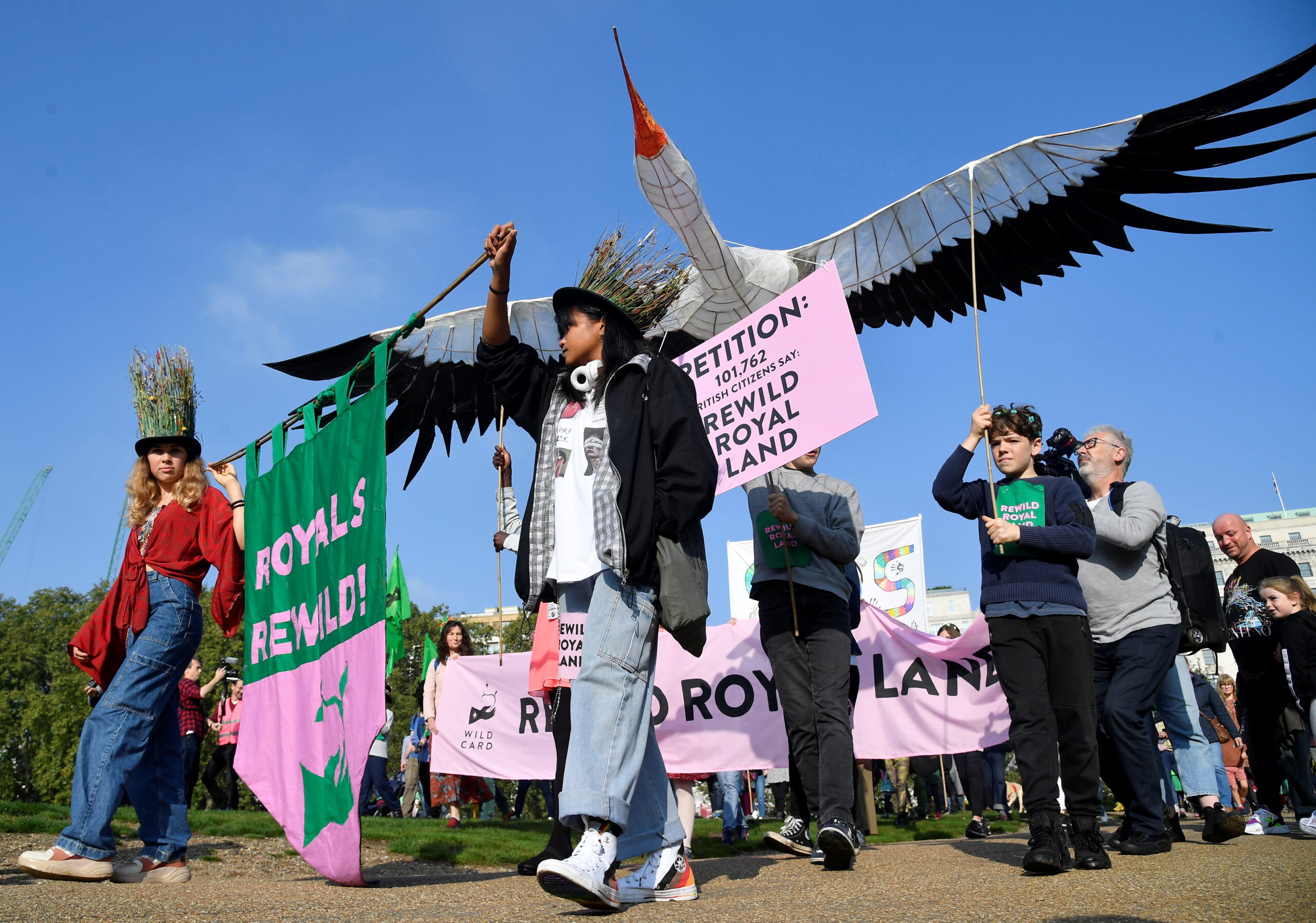Who is the Rewilding Movement’s Green Utopia For?

‘Rewilding’ – the process of restoring wilderness areas – is flavour of the month. Spearheaded by figures like George Monbiot, it’s a cause that’s been taken up by everyone from environmental activists and non-profits to large landowners like the National Trust, the Church Commissioners for England and the Duchy of Cornwall (which together own one-third of England’s land).
But rewilding is inconsistently defined, and at its worst, it can be actively harmful. Advocates need to ask: who is this green utopia for?
Making the rich richer…
Rewilding has mesmerised the public with visions of untouched landscapes where “beavers, butterflies and everything in between” can thrive. Rewilding Britain aims to protect 30% of land by 2030, and promises to benefit rural communities by boosting local economies and supporting sustainable farming.
But the question of land ownership is critical in determining who will benefit from rewilding. Land ownership in Britain is “astonishingly unequal”, with over 50% controlled by less than 1% of the population – typically aristocrats and corporations – and at present, it’s they who benefit most from rewilding.
Take the UK’s pioneering rewilding project, Knepp Wildland in West Sussex. In 2018, owners Sir and Lady Burrell made approximately £1.25m through the sale of organic meat, wildlife safaris, glamping holidays and renting cottages and farm buildings. Eyeing up the potential profits, other aristocrats have made plans to rewild their ancestral estates.
…and driving inequality.
Rewilding is also driving inequality, particularly in Scotland, the UK leader in land inequality. A 2022 report found that rewilding, alongside carbon markets and environmental subsidies, is a key driver of growing land concentration in Scotland, with buyers snapping up thousands of acres of agricultural land (so-called “green lairds”). In 2021, the average price of land rose 87%, meaning locals are increasingly priced out and excluded from shaping and benefiting from rewilding.
The rewilding rush has also led to an increase in off-market land deals, further limiting community-led rewilding. With demand outstripping supply, forestry agents, alongside anonymous foreign investors, are increasingly approaching landowners. According to a recent report, a third of arable and forestry land and two thirds of estates are sold privately. Opaque dealings and skyrocketing prices handicap communities’ fundraising efforts when competing with corporate and foreign buyers, limiting their rewilding opportunities.
Threatening small farms…
Moreover, rewilding threatens to displace small-scale and family farmers. ‘Farmland grabbing’ – the rising interest in farmland and increases in large-scale land deals – has typically been associated with developing countries. But farm-grabbing is also a creeping phenomenon in the EU, especially in poorer Eastern European countries. The “rapid exit” of Europe’s small sustainable farms undermines food security, employment, biodiversity and rural livelihoods. Meanwhile, rewilding can also have a damaging impact on indigenous populations, such as the Sámi, who have a long history of being dispossessed by so-called ‘conservationists’.
The last five years have seen over 40% of UK farms sold to non-farming buyers, including green investors looking to rewild, tree plant and carbon offset. In 2022, small farms – rather than the large, industrial farms which drive the climate crisis – made up most of UK farmland sales, affirming longer-term trends. The National Trust, a key rewilding stakeholder, even offered small-scale farmers in Cornwall and Wales cash incentives to leave farming.
…and limiting access to nature.
It isn’t only small-scale farmers who lose out with the current rewilding model – marginalised urban communities look set to be excluded too. Rewilding Britain paints an idyllic vision of wilderness landscapes in which people are able to reconnect to nature and improve their mental and physical health. But which people, and how?
Estates like Knepp provide respite for wealthy, nature-starved Londoners, but are largely inaccessible to marginalised urban populations. A 2021 study found that people from BAME backgrounds are on average 11 times less likely to have access to greenspace, and of the time BAME people spend in green spaces, only 15% of it is in the countryside (compared to 38% for white people). Part of the problem is private land ownership, of course, which means the public can’t access 92% of the countryside – and yet Knepp had the cheek to criticise urban populations for trampling nature.
Even urban rewilding projects can displace marginalised communities over time, as housing prices rise with proximity to green spaces – a process known as ‘eco-gentrification’. A recent report on equitable access to urban nature shows how in England and Wales, houses within 100 metres of public green spaces are on average £2,500 more expensive than if more than 500 metres away.
Democratic rewilding.
So what can the rewilding movement do to create a green utopia for all?
Instead of enabling the rise of green lairds, the rewilding movement should call for the democratisation of land ownership via community buyouts and the establishment of council owned farms, managed and run by local authorities. This would encourage new farmers into the industry and keep rewilding revenues in local economies.
To promote accessibility, the rewilding movement needs to re-integrate rather than further separate humans from nature by bringing nature to marginalised communities – but without contributing to eco-gentrification. Promoting practices like ‘guerilla gardening’ – growing food or flowers in neglected urban spaces – and allying with small-scale farmers to demand legislation that supports existing regenerative farming can help with this.
Indeed, the rewilding movement should remember its roots in anarcho-primitivism – a critique of the capitalist exploitation of people and nature. Instead of dwelling on the merits of beaver-spotting and berry-picking, it must look to the earth-based societies and adopt practices that are more in balance with nature. After all, it is humans, not nature, that need rewilding.
Maozya Murray is a writer based in Brighton.


